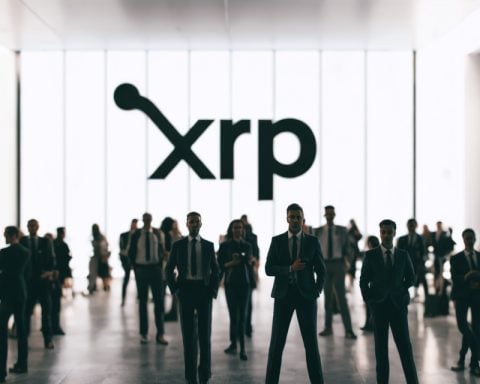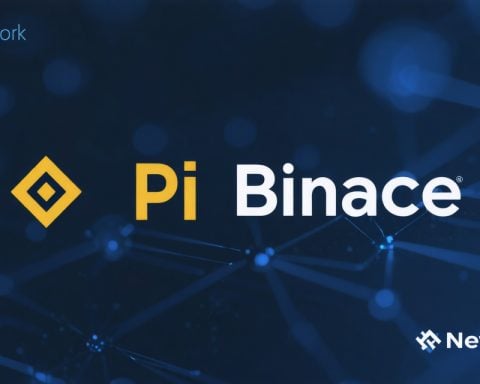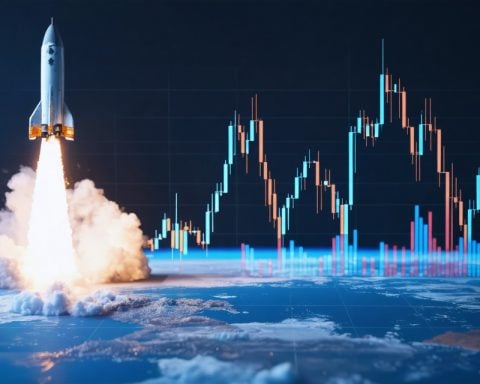- XRP aims to revolutionize cross-border transactions with its innovative digital currency platform.
- The decentralized XRP Ledger enhances transaction speed and reduces costs compared to traditional international banking.
- The Ripple Protocol Consensus Algorithm (RPCA) offers a sustainable alternative by eliminating energy-intensive mining processes.
- Banks partnering with Ripple seek to cut processing times from several days to seconds, promoting financial inclusion.
- Despite regulatory and market challenges, XRP’s technology holds significant transformative potential for global finance.
- As blockchain adoption grows, XRP is positioned to lead in the evolution of a decentralized financial ecosystem.
The evolving landscape of finance is being reshaped by emerging technologies, and at the forefront is XRP, the digital currency aiming to redefine cross-border transactions. As international banking grapples with inefficiencies, the XRP Ledger presents an innovative solution poised to transform global payment systems.
XRP operates on a decentralized blockchain, designed specifically to enhance the speed and lower the cost of international transfers. Unlike other cryptocurrencies, XRP’s consensus mechanism, the Ripple Protocol Consensus Algorithm (RPCA), eliminates the need for energy-intensive mining, offering a more sustainable option for digital transactions.
In recent developments, several banks and financial institutions are exploring partnerships with Ripple, the company behind XRP, to harness these technologies. By integrating with RippleNet, banks aim to significantly reduce processing times from several days to mere seconds. This shift could bring about a more inclusive financial system, allowing people, especially in developing regions, access to faster and cheaper banking services.
Critics, however, express concerns about regulatory scrutiny and market volatility. Yet, the potential benefits of XRP’s technology cannot be overlooked. As more industries embrace blockchain, XRP could indeed be pivotal in the shift towards a decentralized financial future.
With the world gravitating towards digital currencies, XRP’s journey could define a new era in international finance, making it a technology to watch in the years to come.
Is XRP the Key to Revolutionizing Global Finance?
How Does XRP Handle Emerging Security Challenges?
XRP offers a decentralized blockchain framework, leveraging the Ripple Protocol Consensus Algorithm (RPCA), which is inherently more secure against attacks compared to traditional proof-of-work systems like Bitcoin. However, as with all blockchain technologies, vulnerabilities persist, particularly related to smart contracts and third-party integrations. Ripple continuously updates its security protocols and collaborates with financial institutions to ensure the integrity and safety of transactions. For more insights into blockchain security developments, visit CoinDesk.
What Are the Pros and Cons of Integrating with RippleNet?
Pros:
– Speed and Efficiency: RippleNet allows for transactions to be completed in seconds, significantly reducing processing times and enhancing the efficiency of cross-border payments.
– Cost-Effectiveness: Lower transaction costs compared to traditional international transfer services make RippleNet attractive to financial institutions and consumers alike.
– Sustainability: The lack of mining requirements makes XRP a more environmentally friendly option.
Cons:
– Regulatory Uncertainty: Ongoing scrutiny from financial authorities continues to pose potential challenges to widespread adoption.
– Market Volatility: Like other digital currencies, XRP’s value can be susceptible to significant fluctuations, impacting its potential stability as a financial tool.
For a comprehensive comparison of financial technologies, check Finextra.
What is the Market Forecast for XRP Over the Next Few Years?
The market for XRP is predicted to grow as more institutions adopt blockchain solutions for international transactions. Analysts suggest that if XRP can successfully navigate regulatory challenges and maintain partnerships with major financial entities, its value and adoption could increase significantly. An expanding network will likely lead to broader acceptance and integration across sectors, possibly making XRP a cornerstone in the global economic landscape. For detailed market predictions, explore MarketWatch.
Ultimately, the evolution of XRP and its potential impact on global finance depend on regulatory developments, technological advancements, and market dynamics. As the digital currency landscape continues to mature, keeping an eye on XRP might provide insights into the future of money and cross-border commerce.



















